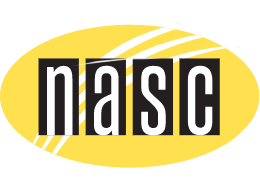Why Is Starch Bad For Dogs?

Pet food manufacturers promote the benefits of processed dog food with ingredients that include grains and alternate starches. Lots of them. Raw feeders focus on meat, organs, bones plus fruits and vegetables … with not a starch in sight. This creates a lot of confusion for owners who want to feed their dogs the best diet possible. Is starch bad for dogs or not?
3 Reasons To Avoid Starch In Dog Food
Here are some reasons to avoid feeding starchy carbohydrates to your dog.
1. Toxicity From Mycotoxins
Crops like corn, barley, wheat, beets, peanuts and cottonseed are contaminated by mycotoxins. Sorghum, rice, wheat, millet, soybean and sunflower seeds can also be affected. Mycotoxins are byproducts of mold or fungus that contaminate crops before harvest or after they’re stored.
Aflatoxins are well-known mycotoxins and, according to the FDA, one of them, AFB1, is “the most potent known natural carcinogen and is the most abundant of the aflatoxins” (1). Note that it’s also described as “natural” … so if you think natural always means healthy, this should convince you otherwise.
Between 2008 and 2017 an analysis of 74,821 animal feed samples collected from 100 countries showed that 88% were contaminated with at least one mycotoxin (2). And once aflatoxins reach your dog, they target many organs … especially the liver. The liver’s job is to remove toxins and contaminants in your dog. But aflatoxinx can overpower the body and cause toxicity, suppress the immune system and lead to cancer. Mycotoxin exposure accumulates and builds up in your dog over time.
A 2015 study analyzed 48 commercial dry dog foods for the presence of five different mycotoxins (3). The researchers tested 24 “standard economy” foods and 24 premium foods.
The results found at least 2 types of mycotoxins contaminated the lower-priced foods and all except one of the premium foods. 52% of all the foods contained 3 different mycotoxins … and 25% had 4 different types. All 5 mycotoxins were in one of the premium brands.
Many manufacturers test for mycotoxin contamination. But even if within the FDA limit, multiple types can be present and combine to become more toxic.
And here’s where those feeding raw diets can take comfort. Dr Trevor Smith, an animal and poultry science researcher at the University of Guelph, says mycotoxin contamination is the largest concern in pet foods today. Says Smith:
“… when half of the food is of vegetable origin, there will always be some degree of contamination. If the food is mainly of animal origin, the chances of contamination are greatly reduced.”
2. Antinutrients Steal Nutrition
Antinutrients are substances that interfere with the absorption of vitamins, minerals and other nutrients, as well as interrupt digestive enzymes. Antinutrients can be natural or man-made. But one thing is certain, they steal nutrition from your dog. And you’ll find them in grains, beans, legumes and nuts (4) So they’re also in processed dry dog food.
Antinutrients include …
Phytic Acid (Or Phytate)
Phytic acid is found in grains and legumes. It binds to important minerals like copper, iron, magnesium and zinc, and prevent your dog’s body from using them. Phytic acid can bind to 80% of these important nutrients.
Lectins
You’ll find lectins in beans and some grains. Lectins can limit the absorption of nutrients … and they can also damage your dog’s intestinal lining. This affects the ability of nutrients to pass through your dog’s intestines into his bloodstream and body. It can also disrupt the microbiome and lead to allergy and autoimmune reactions.
Other antinutrients in grains and starches include gluten (which can lead to leaky gut syndrome and autoimmune disease), tannins (that upset the digestive tract) and oxalates (which cause kidney stones).
3. Glycemic Load
Glycemic load measures how quickly foods with carbohydrates raise blood sugar levels. Small amounts of starch may not be harmful, but foods heavy with starchy carbs (like most processed dog foods, which are 30-60% carbs), it leads to weight gain, obesity and insulin resistance.
Your dog’s body breaks down dietary carbohydrates into glucose (blood sugar), which the body uses for energy. Insulin is released to move the glucose into the cells. Glycemic load means the speed at which this happens. A high carbohydrate content from too many starches causes a fast spike in glucose and insulin.
Frequent insulin spikes are unhealthy. They cause your dog’s body to become less sensitive to insulin, causing insulin resistance. Spikes cause the pancreas to work harder to produce increasing levels of insulin. It can exhaust the pancreas so it stops producing insulin … and your dog could become diabetic.
Insulin resistance can also mean higher risk of thyroid disease, heart problems and some types of cancer. Plus, insulin is the only hormone in the body designed to lower blood sugar and store fat to prepare for times of famine. Instead, starchy diets mean insulin is needed multiple times a day throughout your dog’s life. So a dog eating a diet high in carbohydrates can become fat when insulin causes fat storage.
And there are other reasons starch isn’t good for your dog.
6 Dangers Of Carbohydrates
Here are some other problems with starchy carbs …
- Harmful bacteria feeds on carbohydrates.
- Cancer cells feed on carbohydrates.
- Carbohydrates are not a complete protein source.
- Many grains and starches are genetically modified. GMOs destroy beneficial bacteria in your dog’s gut.
- Pesticides are sprayed on cereal crops used in your dog’s food.
- Your dog can survive without carbohydrates and live on a diet of protein and fat. Carbohydrates only serve your dog as an energy source. But protein and fat are healthier energy sources.
But starches make up a huge amount of the ingredients in dog food.
Why Are Carbohydrates In Dog Food?
There’s a simple answer. They’re cheap. But because they are missing key nutrients, manufacturers add other ingredients to create a balanced diet. These include synthetic vitamins and minerals and amino acids to provide nutrition that’s lacking in the food.
But you can minimize the carb load in your dog’s diet.
3 Ways To Reduce Starch
Here are some ways to reduce or remove starch.
1. Feed A Whole Food, Raw Meat Diet
Raw feeders have removed the carbs and don’t feed ingredients like peas, potatoes and cereal grains. Instead, they include fruits and vegetables that are low in carbohydrates and also contain ample vitamins and minerals.
2. Feed A Cooked Diet
Fresh food is better than processed. And you can control the carb content. You want to keep carbs at less than 10% of the diet and include protein and fat instead.
3. Choose Low Starch Dog Food
If you feed processed food, look for one with minimal starches and carbohydrates. And don’t be fooled by those labeled grain-free foods. They usually substitute legumes or other starches like potatoes.
When choosing commercial kibble, look for less than 15% carbs. And here’s how to do that.
Look at the pet food label and find the panel that says Guaranteed Analysis. Then …
- Add the percentage of protein, fat, moisture and ash.
- If ash content isn’t listed, use 7% for kibble and 2% for canned food.
- Subtract that total from 100. The result is the percentage of carbohydrates in the food.
It looks like this: 100 – (Protein + Fat + Moisture + Ash) = % Carbohydrate.
And don’t be surprised that it’s hard to find a food with only 15% carbohydrate. (Keep reading to find out what to do about that.)
Problems From A Lifetime Of Starch
Even if your dog “appears” to be healthy, that might not be true. Poor diet and loss of nutrients eventually take their toll. So it could be weeks, months or years before your dog has obvious problems. You might see chronic diarrhea, itchy skin or mobility problems. And your vet probably may not understand the link to signs of allergies, cancer, liver or kidney disease. But it’s important to know that a lifetime of eating unnecessary carbs can cause some serious health issues.
If your budget is limited and you can’t avoid kibble, you can improve it by adding protein or healthy fat (like eggs or whole fish) to your dog’s diet. This will help reduce the proportion of carbohydrates, lower the glycemic load and replace some missing vitamins and minerals.
Pet food companies won’t tell you what’s right for your dog, as profits are more important than your dog’s health. Quality ingredients cost more and sadly, many dog owners aren’t prepared to pay a higher price.
You can be an exception … and then you’ll notice what a change in diet can do for your dog’s health.
References
- Food and Drug Administration. Bad Bug Book, Foodborne Pathogenic Microorganisms and Natural Toxins, Second Edition. 2012.
- Gruber-Dorninger C, et al. Global Mycotoxin Occurrence in Feed: A Ten-Year Survey. Toxins (Basel). 2019 Jun 27;11(7):375.
- Gazzotti, T, et al. Occurrence of mycotoxins in extruded commercial dog food. Animal Feed Science & Tech. Vol 202. 2015.
- Carbas B, Machado N, Oppolzer D et al. Nutrients, Antinutrients, Phenolic Composition, and Antioxidant Activity of Common Bean Cultivars and their Potential for Food Applications. Antioxidants (Basel). 2020 Feb 23;9(2):186.



